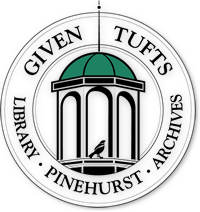Old-School Design: Getting Back to your Roots
Tree removal has emerged as the most significant trend in golf course restoration today as courses throughout the Carolinas attempt to recapture their architectural heritage.
By: W. Dunlop White III
Featured in "Carolinas Golf Magazine"
Featured in "Carolinas Golf Magazine"
Mark Studer couldn't drop the trees any faster at historic Oakmont Country Club. While members were home asleep, a small squadron convened regularly before dawn armed with high-powered spotlights and a battalion of twenty-inch chainsaws. Chippers, stump grinders, vacuums, and fresh sod were all brought along to tidy up the mess. As they cut deeper through the impinging hardwoods, the green chairman rediscovered the innate beauty and hidden ground features of Henry Fownes' 1903 masterpiece long before the membership noticed any transgressions.
As a critical part of their long-range restoration plan, Oakmont - site of the 2007 United States Open and home of 13 USGA national championships - removed over 4,500 trees leaving only a handful of specimens standing.
"If Fownes returned today, his comment might be - what's all the fuss, it looks like it did when I was last here," says Studer. "Through old, black-and-white photographs, we simply acted as the custodians and caretakers of his legacy, an agenda our membership would never have supported at the outset."
Today, Oakmont serves as a bastion of tradition for all clubs attempting to reclaim their architectural heritage. Dozens of America's most treasured venues, including Winged Foot, Shinnecock, Olympic, and Baltusrol, have followed suit, clearing away decades of tree plantings and overgrowth. Even North Carolina's most distinguished Donald Ross designs point toward Oakmont for inspiration as they embark upon judicious tree management plans.
Instead of indiscriminately cutting, numerous club officials across the Tarheel state have made the short pilgrimage to the Tuft's Archives, the Donald Ross repository in the village of Pinehurst, to uncover rare photographic evidence that reveals exactly how their courses looked when they first opened.
"We maintain more than 7,000 documents of more than 300 Ross courses", says archivist, Audrey Moriarty, who catalogues all artifacts, including original green sketches, routing plans, field drawings, and business records, relating to the legendary Scottish-born architect.
In addition to the Tuft's Archives, the United States Department of Agriculture operates natural resources, soil, and water conservation agencies in local counties throughout each state, which typically house collections of historic overhead photographs.
"This is another valuable source," says Michael Fay, Executive Director of the Donald Ross Society. "Just look - Ross courses were never stuffed with vegetation," says Fay while examining a 1939 aerial of Roaring Gap Club in Roaring Gap (NC).
It's not a coincidence that many Ross layouts were once fallow and barren. Ross once wrote, "as beautiful as trees are, we must not lose sight of the fact that there is a limited place for them in golf." Classical architects, like Ross, were influenced by The Old Course and links golf in Scotland, so they naturally embraced open, windswept landscapes as ideal sites in America. If woodland areas were marked for construction, the clearing plans were generally spacious and wide.
As golf courses have evolved, it's hard to determine which have been more damaging - newly planted saplings or mature hardwoods that have outgrown their welcome. Oddly enough, trees have a peculiar habit of growing larger - far more expansively than their planters ever envisioned. It's difficult to notice during any one season, but over the course of 70 years, hole corridors have lost nearly half of their intended playing areas.
In the 1970's, club officials began planting heaps of ornamental saplings in virtually every open space on golf courses as part of a nation-wide, beautification measure. In the 1980's, the contention was for safety between holes, as awareness of liability escalated. Thousands more took root in the 90's as part of a widespread movement to "toughen" courses and defend par.
Nowadays, countless golf holes are simply too narrow as trees tend to choke fairways from both sides. Unfortunately, good shots are restricted to the dead center of play. As a result, golf can no longer be approached like the game of billiards - where the lateral angle of the first shot is chosen with the diagonal of the next shot in mind. Strategy is all but lost when alternative angles of approach are straightjacketed by runaway tree plantings and unchecked vegetation.
Golf architect, Richard Mandell, who has been commissioned to revive the Donald Ross flavor at Raleigh Country Club, plans to move a few hundred ill-advised plantings just off the sides of fairways. "Most of the tree work here will involve thinning out the edges," says Mandell.
Kris Spence, a Ross restoration specialist from nearby Greensboro, couldn't agree more. "Tree removal helps re-establish preferred lines of play along the outer perimeter of golf holes, says Spence, who has reinstated broader fairway widths at Roaring Gap, Mimosa Hills in Morganton, Grove Park in Asheville, and Gaston Country Club in Gastonia.
"But because memberships are more concerned with course conditioning than with strategic shot values, it's always smart politics to approach tree removal with the emphasis on growing healthy turf," says Spence. "You don't need to go any further than your own backyard to see how grass suffers near trees. Their canopies and foliage screen air circulation and conceal essential morning sunlight. Plus, trees are dominant plants to grass, and when competing for nutrients and water, trees will invariably win".
Last summer, when Pine Needles Lodge and Golf Club in Southern Pines re-grassed their fairways with an innovative turfgrass, called TifSport Bermuda, golf course architect, John Fought, also removed several hundred towering pines. Even if the best grasses in the world were planted, it would still be hard to grow anything without sunlight and air, according to club president, Kelly Miller.
After all, shade and damp areas do go hand in hand. Without six hours of unfettered sunlight each day, critical turf areas cannot properly dry. Moist turf attracts diseases, which must be chemically treated with herbicides and fungicides. Too often, a chainsaw is the better remedy.
During the winter, trees also block precious sunlight, which prolongs ice coverage and delays thawing. The end result is winterkill. Evergreens are too often the culprits, as they don't lose their dense leaf material that shields the low-lying winter sun.
Evergreens also possess low-extending limbs that interfere with golf swings and stymie fair opportunities for recovery. When engaged, golfers are simply forced to punch the ball laterally out of harm's way.
"Recovery play is much more thought provoking from wooded areas that have been selectively thinned of these low-branched species", says Spence, who ordinarily recommends a program of cleaning out the underbrush and raising tree canopies to a reasonable height. Under these conditions, golfers may assess the risk of their next angle of attack, and depending upon their skill, may shape the ball through alternative openings to safety.
Also, grand signature trees can be exposed without a dense understory. Bring to view the prominent trees, which have always been hidden among impinging vegetation. Grand oaks and other specimens will become visually accentuated upon the extraction of unattractive neighbors.
Extracting cheap varieties from the interior of courses also has a remarkable impact on landscape aesthetics. "Golfers are usually astonished with the beauty of distant site-lines that can be uncovered through a well thought-out plan of tree removal," says Spence. More clubs should embrace the visual appeal of long, sweeping vistas.
Bradley Klein, a prominent golf course therapist, contends that a tree's capacity to screen is best suited for the perimeter of the premises to partition the course from outside structures and distracting noise. Klein, also the author of the award-winning biography, Discovering Donald Ross, acknowledges that there are proper places for trees in golf. "Trees are fine if they don't shade or compete with crucial turf areas, or if they don't lead to vertical walls that turn golf holes into one-dimensional bowling lanes. Ultimately, trees should complement the dominant function of the site, which is to enable golf to take place", says Klein.
Thanks to Oakmont, tree management has emerged as an essential component of golf course restorations today as architects across the country re-evaluate how various species interact with their surroundings in the context of course strategy, agronomy, and aesthetics.
The Raleigh Country Club has come a very long way in a very short time. From the brink of extinction to top class operating facility usually takes a lot longer than three years. Congratulations to Richard Mandell, John McConnell and a superb management team for this miraculous rebirth.
Example Photography
| BEFORE | AFTER |
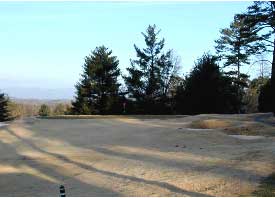 | 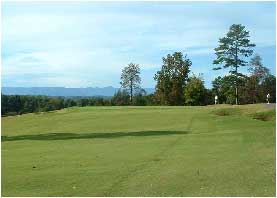 |
Tree management at Mimosa Hills in Morganton (NC) re-exposed No. 15 green to precious morning sunlight and while uncovering an attractive 20-mile vista of the Blue Ridge Mountains.
| BEFORE | AFTER |
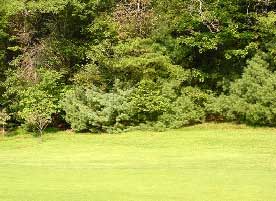 | 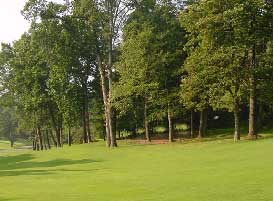 |
Tree management on Hole 8 at Roaring Gap Club (NC) involved extracting volunteer evergreens and impinging vegetation from the under story of woodland areas, a process that brought to view elegant hardwoods and provided room for recovery play.
| BEFORE | AFTER |
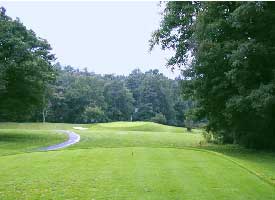 | 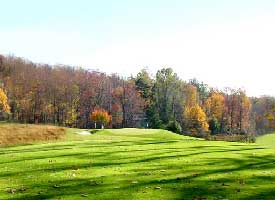 |
The restoration of Hole No. 6 at Roaring Gap Club also required peeling back the overgrowth on both sides of the tee to offer full scale playing lanes and site-lines through the target.



